Affiliate links on Android Authority may earn us a commission. Learn more.
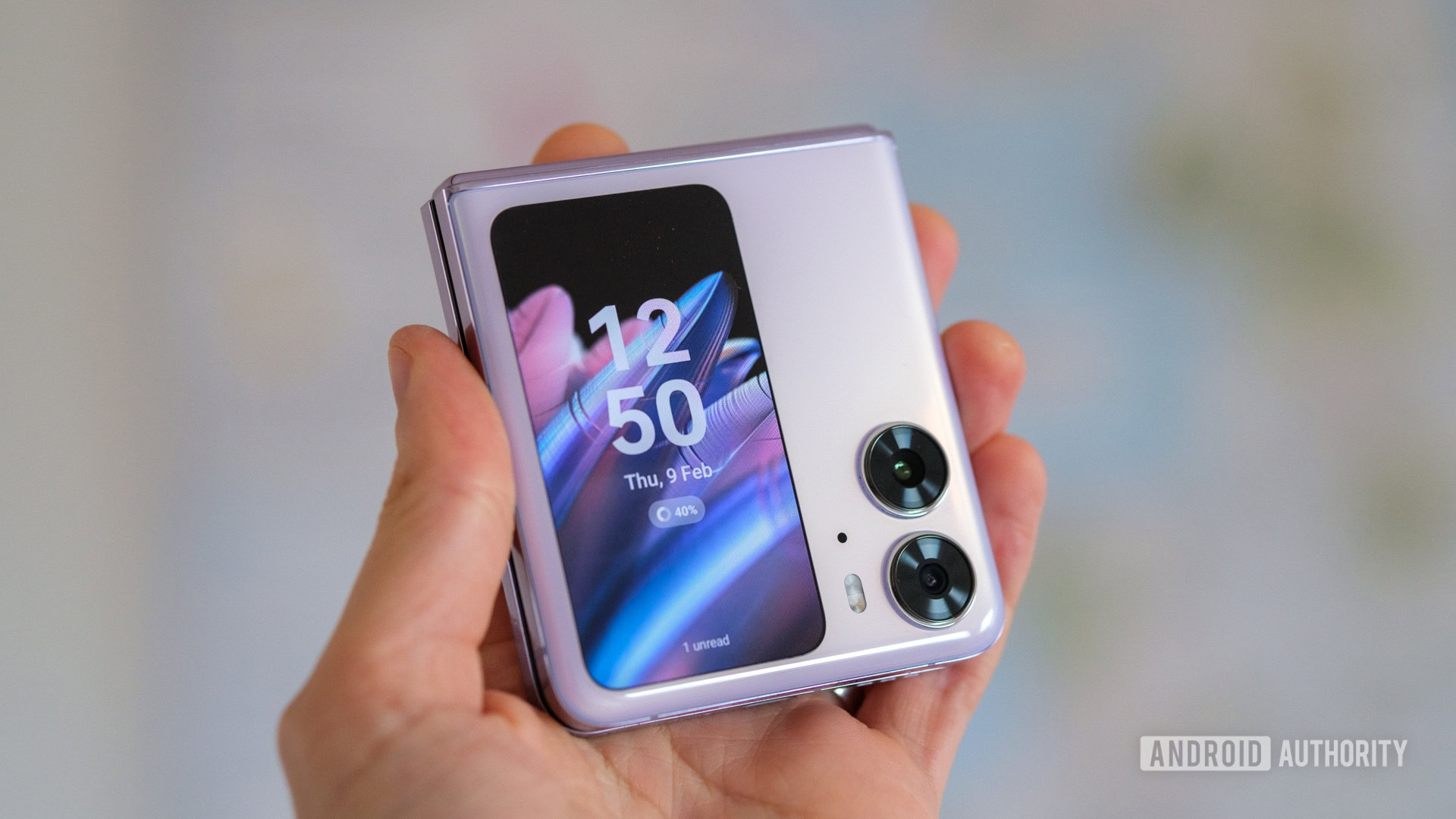

OPPO Find N2 Flip review: Flippin' fabulous
Published onMay 30, 2023

OPPO Find N2 Flip
What we like
What we don't like

OPPO Find N2 Flip
Past years have yielded very few options when looking for the best foldable phones. Samsung has, pretty much, had its exclusive pick of the premium market, but that’s all changing this year. Having spent time perfecting their designs on home soil, Chinese brands are ready for Western prime time, including OPPO.
You’ve no doubt seen an OPPO foldable in the past; its book-like Find N and Find N2 have been available in China for a little while now. However, the new OPPO Find N2 Flip is the brand’s first model to make its way to a global audience. It’s also the company’s first take on the ever-nostalgic clamshell form factor. So let’s jump right into Android Authority’s OPPO Find N2 Flip review to see what’s in store.
What you need to know about the OPPO Find N2 Flip
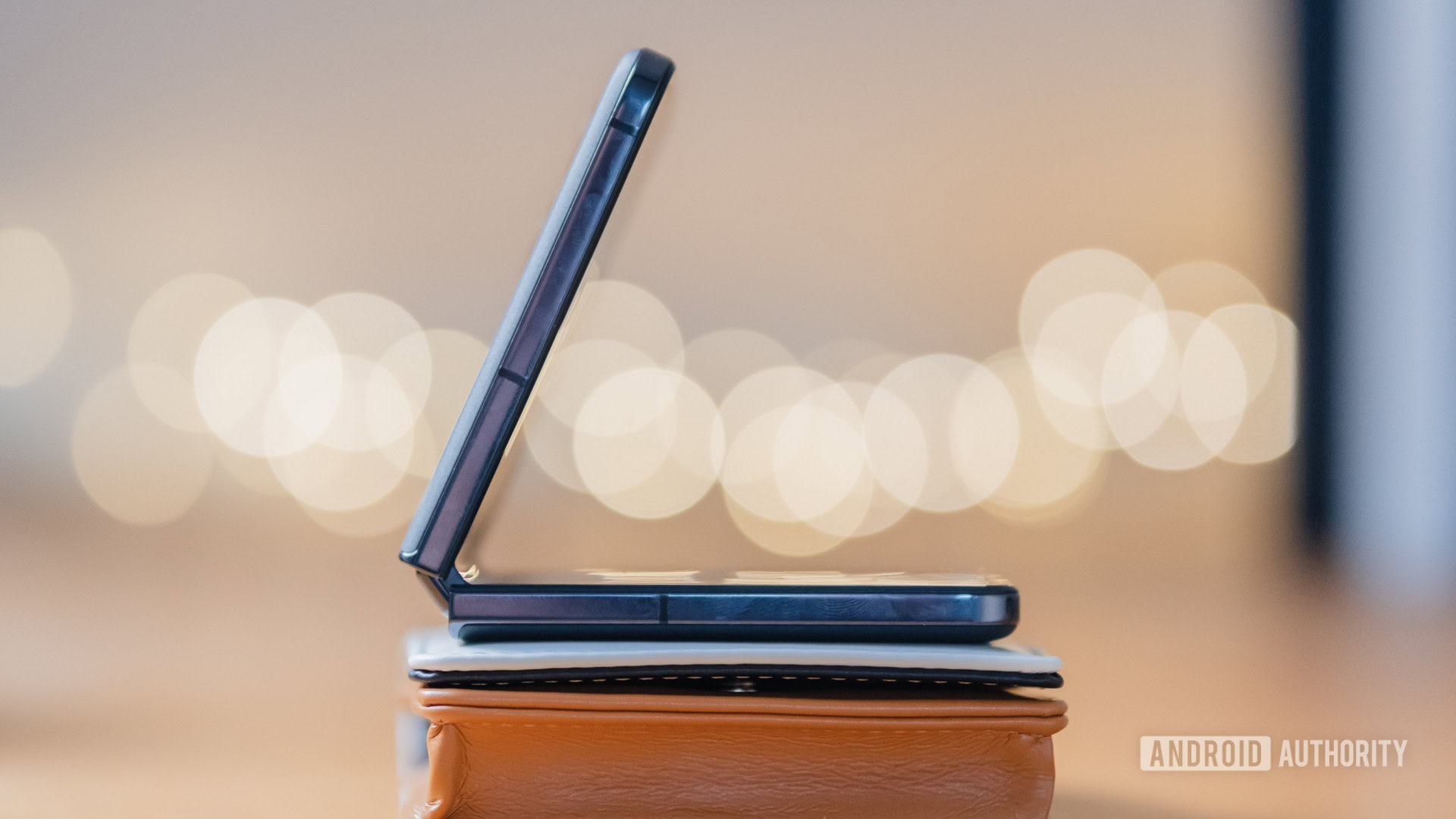
- OPPO Find N2 Flip (8GB/256GB): ~£849 (~$1,027)
How do you break into a new market? Well, competitive pricing is an excellent place to start. The Find N2 Flip is sold at a very reasonable £879 in the UK. The Find N2 Flip is still not an impulse purchase at that price, but it’s a more affordable entry point in the fledgling foldable market. Most significantly, it’s £150 less than the Samsung Galaxy Z Flip 4 launched for and £50 cheaper than we’ve seen Samsung’s clamshell ever drop to in a deal. Complete with double the base storage, the Find N2 Flip sounds like a bargain. Well, let’s see.
We’re only just getting started with the comparisons with the Z Flip 4; OPPO’s clamshell sports a tried and tested “cover screen,” enabling you to interact with the phone when closed. But it’s much larger than Samsung’s sliver of a screen, clocking in at 3.26 inches compared to the Z Flip 4’s 1.9-inch panel. However, unlike OPPO’s larger, tablet-hybrid Find N2, the N2 Flip’s external display doesn’t give you full OS control. Instead, OPPO provides a selection of widgets, catering to messaging, snapping selfies, setting timers, and even a selection of interactive pets to play with.

The main internal display is an equally fancy affair. It’s an LTPO AMOLED panel with a tall 21:9 aspect ratio and a 1-120Hz variable refresh rate. As you’d expect from a flagship foldable, there’s water resistance and protective glass here, albeit a slightly below-par IPX4 rating paired with the older Corning Gorilla Glass 5. You’ll find a front-facing speaker above the internal display as well as a bottom-firing port that works when closed. They offer a pleasant sense of space and plenty of volume, but the sound is nothing to write home about.
Moving onto internals, the Find N2 Flip is powered by a MediaTek Dimensity 9000 Plus, backed by 8GB of RAM, 256GB of storage, sub-6GHz 5G connectivity, a large 4,300mAh battery, 44W SuperVOOC charging (included in the box), and dual rear cameras along with an inner selfie snapper. OPPO’s partnership with Hasselblad continues here, and you’ll also find the company’s bespoke Marisilicon X image processor onboard to enhance low-light photos and videography.
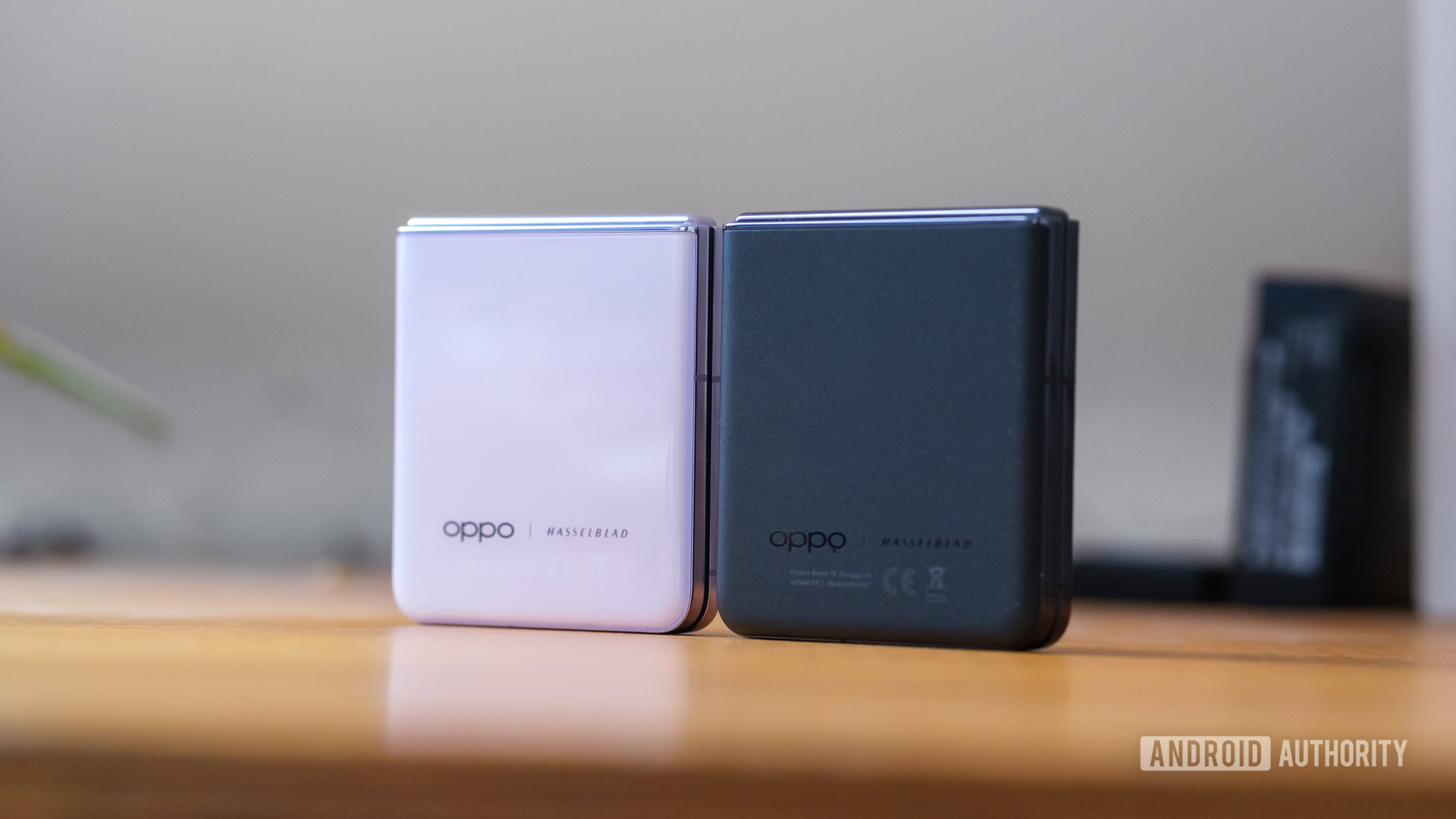
The Find N2 Flip comes in two colorways: Astral Black and Moonlit Purple. The black has a matt finish that’s fingerprint-proof but looks and feels a bit cheaper than the purple’s glossy back. Thankfully an OPPO Glow layer helps keep fingerprints at bay a little on the latter. I do really wish the N2 Flip offered more options; the current choice is either boring or flamboyant, with nothing in between.
UK shoppers looking to buy the OPPO Find N2 Flip have been able to buy one on store shelves since March 2023, although stock appears limited from OPPO’s own store. Each purchase comes with a six-month 100GB trial for Google One. The phone is sold at UK carriers EE, O2, Vodafone, and Virgin Media, as well as third-party retailers such as Amazon, Carphone Warehouse, Argos, and Curry’s. Like all OPPO phones, it’s very unlikely we’ll see an official Find N2 Flip release in the US.
What’s good?
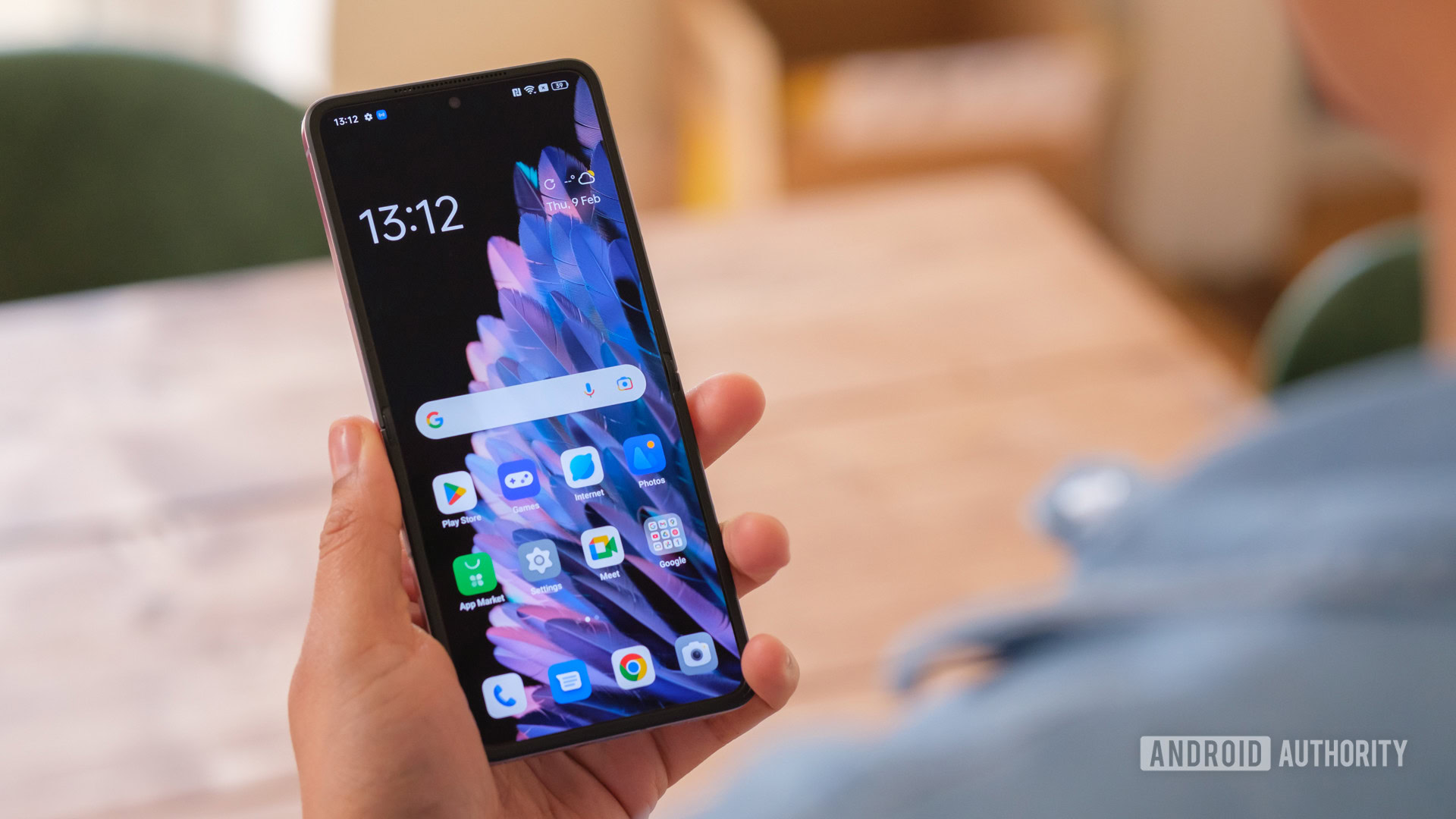
Good things come to those who wait, and you can tell that OPPO has taken its time to get the most important parts of its flippy foldable right on the first attempt. There are no dread-inducing screen protectors or dust ingress points here. The inner panel is Ultra Thin Glass (UTG) rather than plastic, making it ultra-durable. OPPO says its display and hinge are rated for 400,000 fold and unfold cycles, so breathe a sigh of relief; this phone is built to last.
Flip open the, erm, Flip, and you’re greeted by a gargantuan 6.8-inch display. The 21:9 aspect ratio is taller than most flagship smartphones, and it’s a little unwieldy in one hand, but it’s wonderful for reading, just like the similarly lanky Sony Xperia 1 V.
With no discernable crease, it's easy to forget the OPPO Find N2 Flip even has a foldable display when open.
Furthermore, the display’s crease really is virtually invisible. Of course, you can find it if you go looking, but it’s obscured in regular use at all but the most awkward viewing angles. The screen is a joy to use and you quickly forget you’re using a foldable when engrossed in a doom scroll. OPPO’s Flexion waterdrop hinge is to thank for this, as it avoids folding the display in a typical U-shape to avoid creasing. The hinge also holds any position between 45 and 110 degrees, should you want to set the phone down for a selfie or to watch a video.
Likewise, the large cover screen provides plenty of real estate for messages, framing selfies, and checking the weather without having to open the handset up. Just pop it out of your pocket for a quick glance at that notification demanding your attention or let the screen double up as a helpful viewfinder for selfies and group photos. OPPO’s setup is a big step up from what’s come before. It’s smart too, taking you right to apps associated with a notification when you flip open the cover. But as neat as that is, the cover screen’s uses are somewhat limited and many options are a few too many clicks away, as we’ll discuss later.
The Find N2 Flip is already a statement piece, but ColorOS 13 makes it your own.
ColorOS 13 looks vibrant on the huge display and packs in a few tricks to make use of its size. For instance, Flexform mode switches the camera viewfinder to both the top and bottom half of the display, depending on how you angle the phone to capture unique angles. YouTube video also neatly snaps to the top half of the display when you stand the phone up.
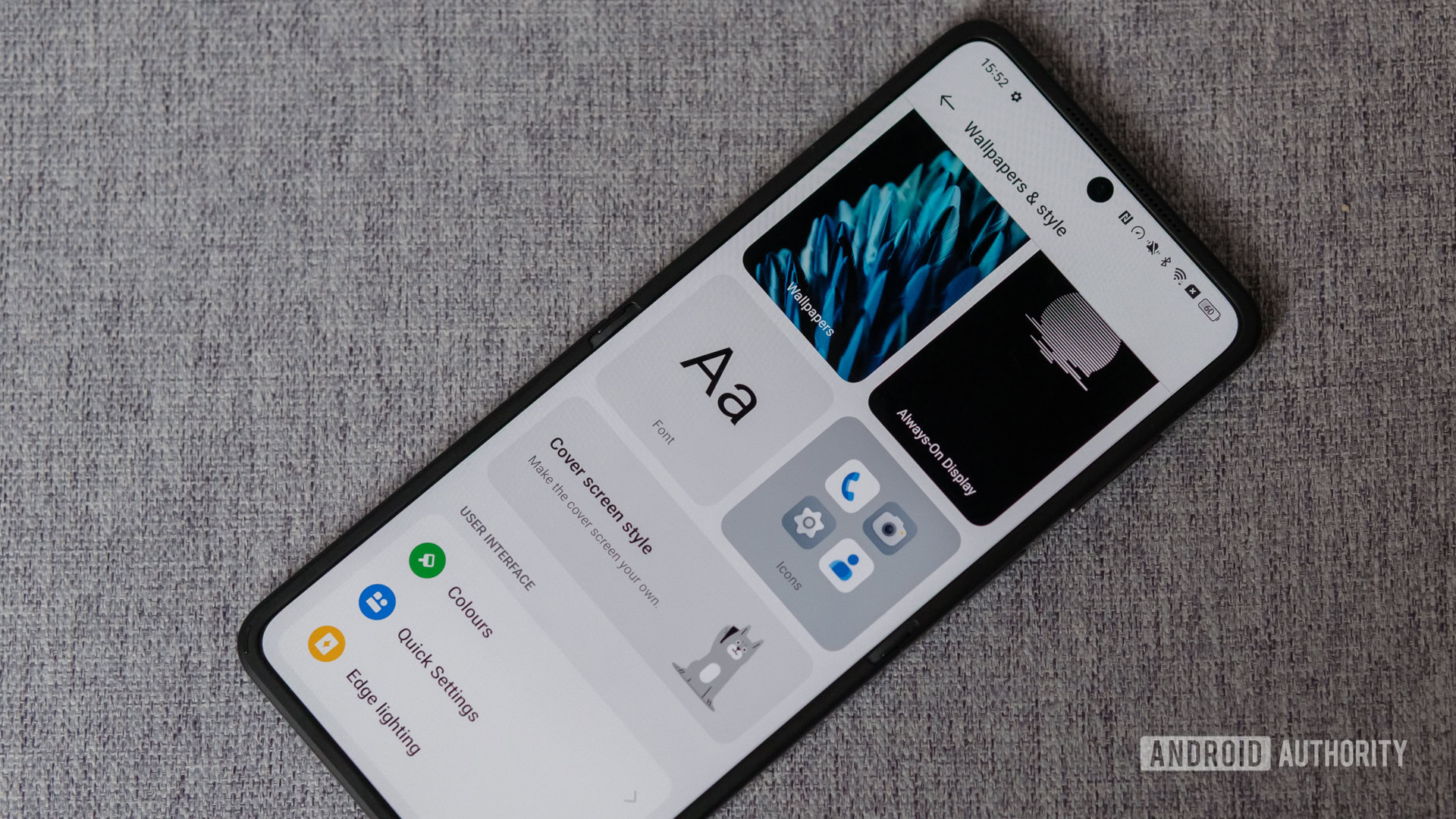
OPPO’s split screen gesture to stack apps atop one another works wonders on a display of this size. You’ll also find ColorOS’ flexible windows and smart sidebar to boost your multitasking capabilities. If that’s not enough, there’s a bewildering range of home screen and AOD lock screen customizations to help you setup the phone just how you like. The Flip’s hardware is already a statement piece, but the software customization really helps make it your own.
Even better, OPPO supports the Find N2 Flip with four years of OS updates and five years of security patches; an investment in OPPO’s foldable today will last you through 2028. That’s music to our ears when spending this kind of money and in line the best update policies you can get. The Find N2 Flip is also the first OPPO phone to offer the Android 14 beta, should you fancy a dabble. The only drawback to ColorOS is a few pre-installed apps (Netflix, Facebook, an unnecessary weather app, and a game), but these can thankfully be uninstalled.
Performance is equally robust. Granted, the MediaTek Dimensity 9000 Plus isn’t brand-spanking new, and there are faster chipsets on the market that support fancy features like ray tracing and may have slightly better longevity. But you’re not buying a clamshell foldable for ultra-elite gaming, and the phone flies through the form factor’s all-important multi-tasking capabilities without a hiccup. The chip is only just over a year old, after all, plus there is a performance toggle to take this up a notch, at the expense of battery life and sustained thermals, should you really need it.
You might think that all this hardware eats into battery life, but the Find N2 Flip’s 4,200mAh cell — 500mAh larger than the Z Flip 4’s 3,700mAh battery — and conservative performance point come to the rescue. This little phone will easily take you through a full day of messaging, email, music listening, video watching, and a splash of photography thrown in. Always-on display, gaming, and video recording chug down the juice quicker, but, even then, you should make it home with a little battery to spare. OPPO hasn’t forgotten that a good foldable is first and foremost a good phone.
What’s not so good?
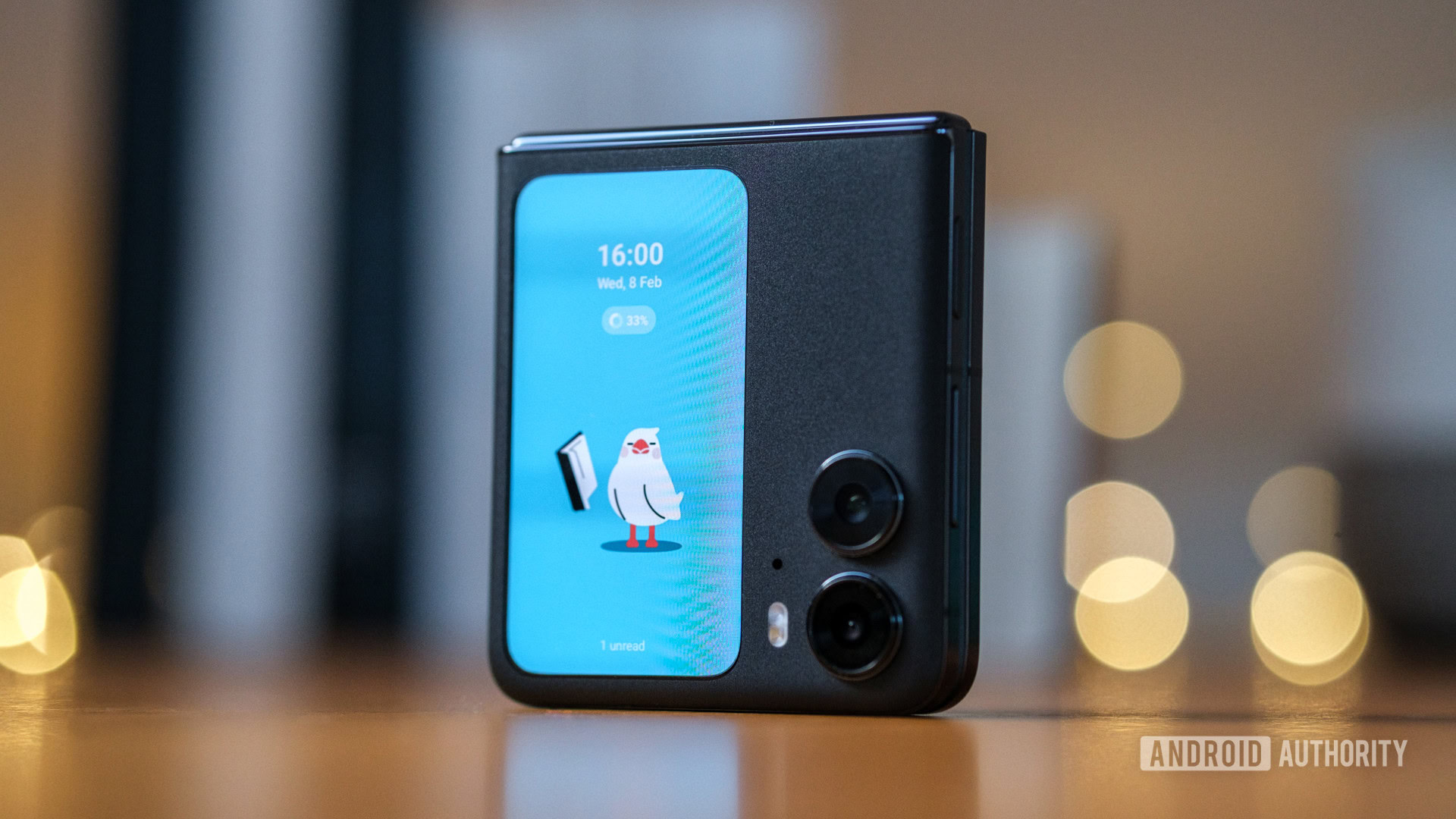
Although the phone’s design is sublime in hand, there are a few oversights that could be better. The IPX4 rating, for example, is below what you’ll find on Samsung’s foldables. Likewise, Corning Gorilla Glass 5 might be tough stuff, but it’s dated and less durable than the latest Gorilla Glass Victus 2. Unfortunately, this premium handset scrimps on the finery we’ve become accustomed to, even at the ~£900 price tier.
A bigger annoyance, initially, is that the cover screen doesn’t rotate to match the phone’s orientation by default. This is a problem; right-handed users will cover the camera lenses with their thumb when attempting to use the display. Thankfully, you can fix this by toggling the auto-rotate display on, but it’s not immediately obvious that you need to use the global setting.
While we’re on the subject, the cover screen is reasonably well implemented, but it’s not without its limitations. Without a keyboard, you’re stuck to pre-set message responses and emojis. You can add extra responses in the settings, but that’s only going to cover so many eventualities. Although you can see up to six lines of text for messages, emails are limited to the sender and subject, which isn’t particularly useful for a quick glance. This might be a limitation of Android’s notification system, but it does hinder the cover screen.
OPPO has done its best to make the cover screen useful, but its limitations can frustrate.
In addition to displaying notifications; camera, events, recorder, timer, weather, recently added Spotify media controls, and wireless earphone management (that only works with OPPO earbuds) are your lot for widgets. That’s a good hand, but hardly a full house. I’d love a global media widget, for instance, rather than dealing with minuscule icons, a health and steps page, or even the ability to use Google Assistant without opening the phone. The current selection doesn’t quite cover every popular eventuality. Likewise, the pets, while cute, aren’t all that interactive save for repetitive animations, making them little more than a gimmick. Give me a full-on Tamagotchi mode and I’d shunt this right into the phone’s positives.
In fairness, OPPO’s cover screen is a step up from what we’ve seen on other devices. Moments of irritation arise only because the large size feels like it should be able to do more than it currently can. It’s not strictly fair to call the cover screen a negative; it’s built for quick glances rather than an alternative to the main screen, after all. Still, if the screen was 1cm wider (perhaps by moving the flash below the cameras), I reckon you’d be able to squeeze in a keyboard and make the whole setup that bit more useful.
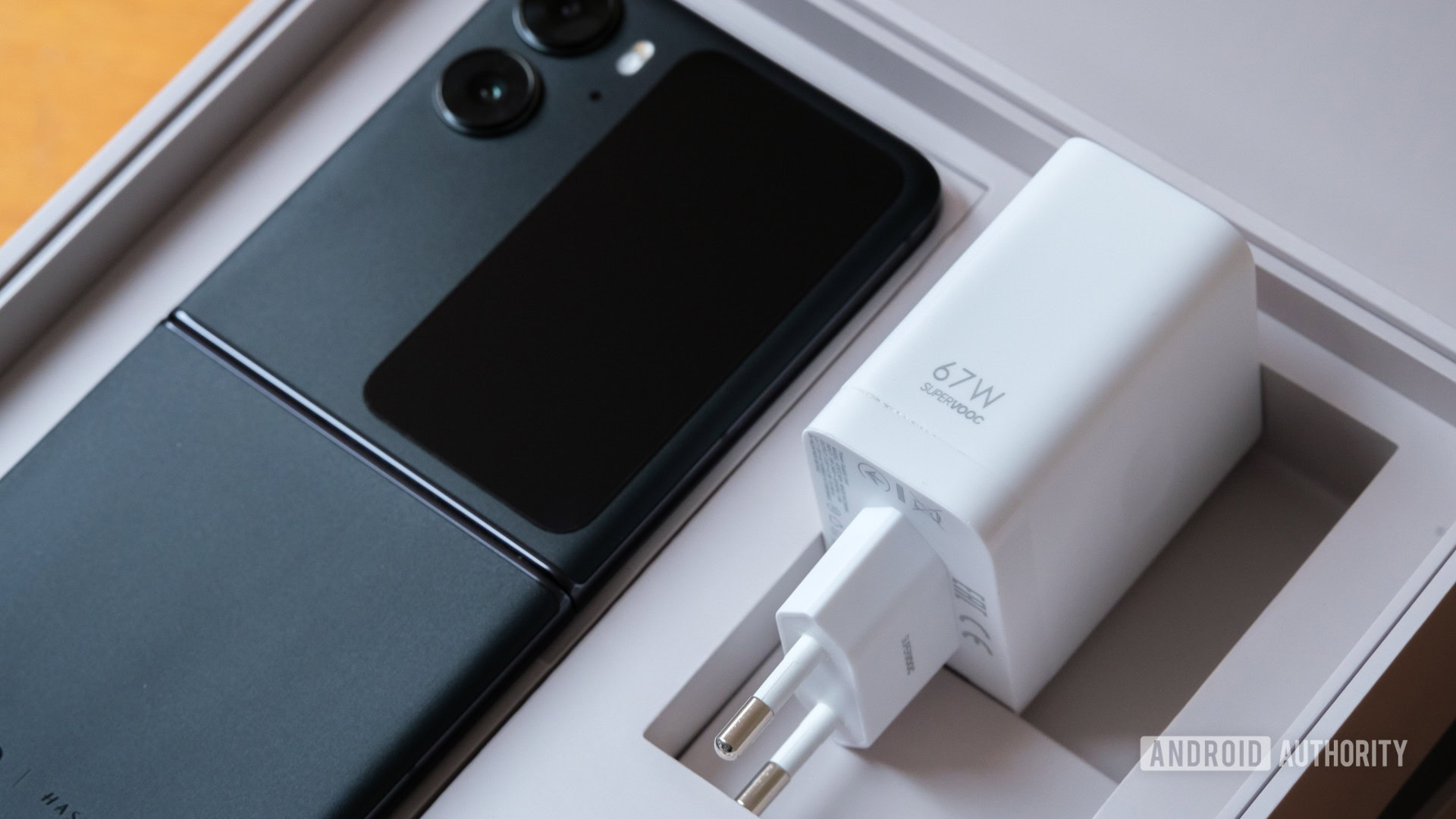
The only real hardware negative is the fast charging setup. The phone is fast-ish to charge with the bundled 67W SuperVOOC charger, though the phone peaks at just 26W despite OPPO’s claims of a 44W draw. Overall, it takes 25 minutes to 50% and 64 minutes to full, which is still pretty great (the Galaxy Z Flip takes around 80 mins to full). The broader package is lackluster, however.
The adapter and supplied cable are USB-A, which is dated for a start. Secondly, the adapter doesn’t support USB Power Delivery, so can’t be used to fast charge laptops and other gadgets. You’ll also run into issues if you have a laptop that lacks USB-A ports and want to transfer data.
The Find N2 Flip fills fairly quickly, but the broader charging package is lackluster.
Likewise, plug the Find N2 Flip into a more common USB PD adapter or power bank and you’re limited to just 15W. Unless you specifically have previous USB-C chargers from OPPO and OnePlus, you’re stuck lugging OPPO’s bulky USB-A wall charger about or suffer the agony of dated slow charging. There’s no room for the convenience of wireless charging here either, something you’d really expect on any phone, foldable or not, at this price point.
The fingerprint scanner located in the power button also has its quirks. It’s snappy to unlock when you have the phone open but occasionally failed to unlock the cover screen, possibly because the sensor is then upside down. You wouldn’t think this matters, but I weirdly had more luck registering my thumb upside down to unlock the cover and using face unlock for the main display. It’s not a deal breaker; just make sure you re-enroll your fingerprint if you have issues.
Finally, the Find N2 Flip’s connectivity suite is well future-proofed for the most part, but the lack of Wi-Fi 6E is a minor stumble. While most won’t have upgraded their home networks, it’s a shame OPPO couldn’t match more recent flagship Wi-Fi specs, especially when its sub-brand, OnePlus, is pushing Wi-Fi 7 support on the OnePlus 11.
OPPO Find N2 Flip camera review
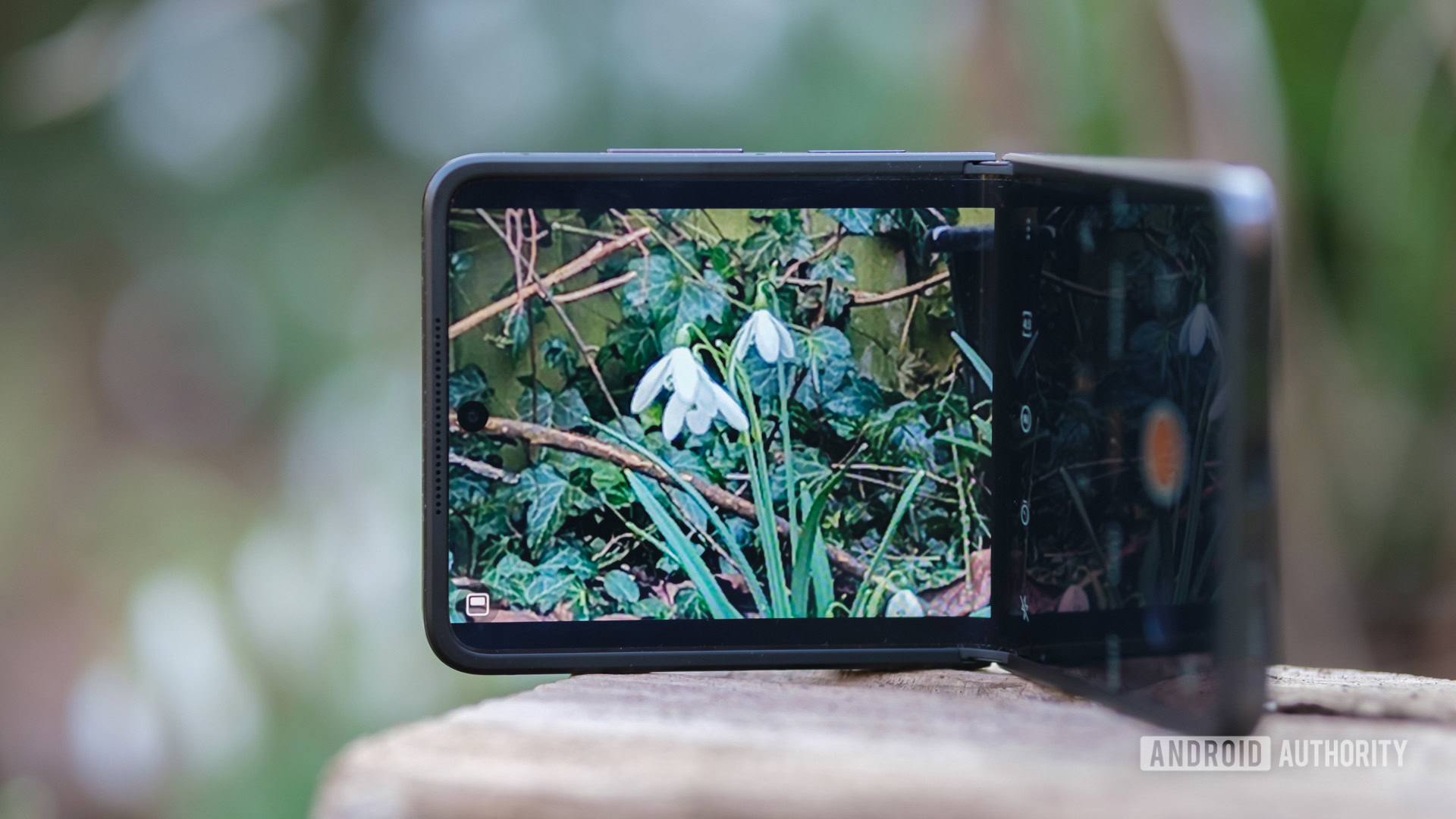
The compact foldable form factor doesn’t lend itself to all the bells and whistles you’ll find on the best camera phones. You won’t find a dedicated zoom lens here, for instance. Instead, OPPO has opted for a main and ultrawide combination, and shakes hands with Hasselblad once again to tune the processing side of things.
The primary camera’s decently sized 50MP 1/1.56-inch IMX890 sensor and wide f/1.8 aperture bode well. The same can’t be said for the small 8MP, f/2.2 ultrawide that uses the same IMX355 sensor as the retired Pixel 3’s selfie camera. Rounding out the package is a 32MP IMX709 RGBW selfie sensor, complete with autofocus to assist with video calls, which you might remember from the mid-range OPPO Reno 7. Still, let’s see what the actual photos present us with. You can see the full-res samples here.
At a quick glance or for posting to social media, the OPPO Find N2 Flip’s main camera certainly impresses. Exposure is virtually always spot on, thanks to Marisilicon X’s SuperHDR technology, and the white balance is great, if not occasionally warm. Colors are vibrant and punchy, a little too so for my tastes, especially the reds, sky blues. The look is also contrast-heavy, but this is what we’ve come to expect from the Hasselblad partnership. On balance, shooting with the main camera produces pleasing results. However, closer inspection reveals a surprising lack of detail for a sensor of this size, and that’s entirely down to OPPO’s processing pass. Images are heavily denoised and oversharpened to the point that complex scenes simultaneously pop yet appear smudged. You certainly won’t be printing snaps to frame on your wall; let’s put it that way.
The Find N2 Flip's photo colors pack a punch, while exposure is always spot on.
OPPO’s SuperHDR technology also assists with low light and it’s quite amazing how much exposure and color the phone can capture from virtually no lighting at all (see the first snap below). That said, the effect can look quite unnatural at times and doesn’t help with the phone’s low-light lens flare problems. It also can’t save the small ultrawide sensor from offering abysmal dynamic range in low light (fourth snap below). While the phone will pass in a pinch in the dark, I can’t say I’m overjoyed by any of the low-light snaps I’ve taken with it.
The issues extend to the prehistoric ultrawide camera. You’ll readily spot chromatic aberration and a drop in detail quality at the lens edges. But worse is the aforementioned lack of dynamic range; shadows are far too black lending an even heavier dose of contrast to ultrawide captures. Combined with an even more pronounced denoise and sharpening issue than the main sensor, there’s virtually no detail from wide-angle snaps at all. They might pass for social, but that’s about it. Granted, the 16mm ultrawide provides a notable step back from the main sensor, but the 23mm main is already wide enough for most scenes, and the lack of overall quality means the additional camera adds very little to the package.
At the same time, the lack of a telephoto lens, all too common in compact foldables, means there’s no real prospect of zooming in. Even 2x is a bit messy, owing to the sharpening issue, while 5x and 10x snaps are bad to look at even on a smartphone screen.
Overall, while we aren’t expecting very top-of-the-range photography distilled down to this form factor, the lack of versatility, and in many cases quality, certainly makes it hard to recommend this phone if pictures are your top priority.
Thankfully, you’re flush with options for solid selfies. You can shoot traditional style with the 32MP selfie camera housed in the inner display. It’s rock solid in controlled lighting environments, if not a little noisy at times, and even handles dim lighting too. However, the small sensor lacks dynamic range and can appear washed out in scenes with bright backlighting or minimal light.
You’ll find a more consistent experience with the main exterior camera, as it produces better detail (still a little oversharp) and colors, and handles HDR brilliantly. Thanks to the cover screen viewfinder, framing the perfect selfie is effortless, and the results are superior to essentially any front-facing shooter you can think of.
OPPO’s portrait mode is exceptionally good, neatly capturing many a stray hair, following shoulders correctly, and even shooting non-human subjects. It’s not perfect though; the aggressive addition of fake bokeh circles is an annoyance once you notice it. Still, the pop of Hasselblad’s color pallet is far more pleasing for portraits than for landscape and street snaps. Overall, the portrait experience is the camera package’s main highlight. To that end though, I would have preferred a portrait-friendly focal length rather than the ultrawide snapper to really make the most of these strengths.
Thanks to the cover screen, the Find N2 Flip's selfie and portrait game is exceptional.
You can take more control over the look of the Find N2 Flip’s snaps with its Hasselblad Pro mode. It ships complete with familiar ISO, shutter, EV, white balance, and manual focus controls, plus the option to capture in 12-bit RAW. Oddly, Pro mode doesn’t work with the ultrawide camera, though I can’t imagine it salvaging the lens anyway.
As for video, again there are limitations with the ultrawide, which is capped at 1080p 30fps. The primary lens has you covered at up to 4K 30fps, complete with SuperHDR night shooting. Unfortunately, OPPO’s Marisilicon X chip doesn’t support 4K 60fps, a mode you would expect at this price tier. The Find N2 Flip also offers video software bokeh at 1080p 30fps. The focusing and edge detection are OK around faces and shoulders but struggle with complex shapes, such as headphones and hands.
OPPO Find N2 Flip specs
| OPPO Find N2 Flip | |
|---|---|
Display | 6.8-inch LTPO AMOLED FHD+ resolution (2,520 x 1,080) 21:9 aspect ratio 120Hz adaptive refresh rate (1Hz to 120Hz) |
Cover screen | 3.26-inch AMOLED 720 x 382 resolution 17:9 aspect ratio 60Hz refresh rate |
Processor | Dimensity 9000 Plus |
RAM | 8GB |
Storage | 256GB No microSD card support |
Power | 4,300mAh battery 44W wired charging No wireless charging Charger in box |
Cameras | Rear: - 50MP wide main sensor (f/1.8, 1/1.56-inch, 23mm) - 8MP ultrawide (f/2.2, 16mm) Front (inside): - 32MP wide (f/2.4, 1/2.74-inch, 21mm) |
Software | Android 13 ColorOS 13 4 Android updates 5 years of security updates |
IP rating | IPX4 certified |
Dimensions | Open: 166.2 x 75.2 x 7.45mm Closed: 85.5 x 72.5 x 16.02mm |
Weight | 191g |
Materials | Gorilla Glass 5 UTG display Armor Aluminum frame |
OPPO Find N2 Flip review: The verdict
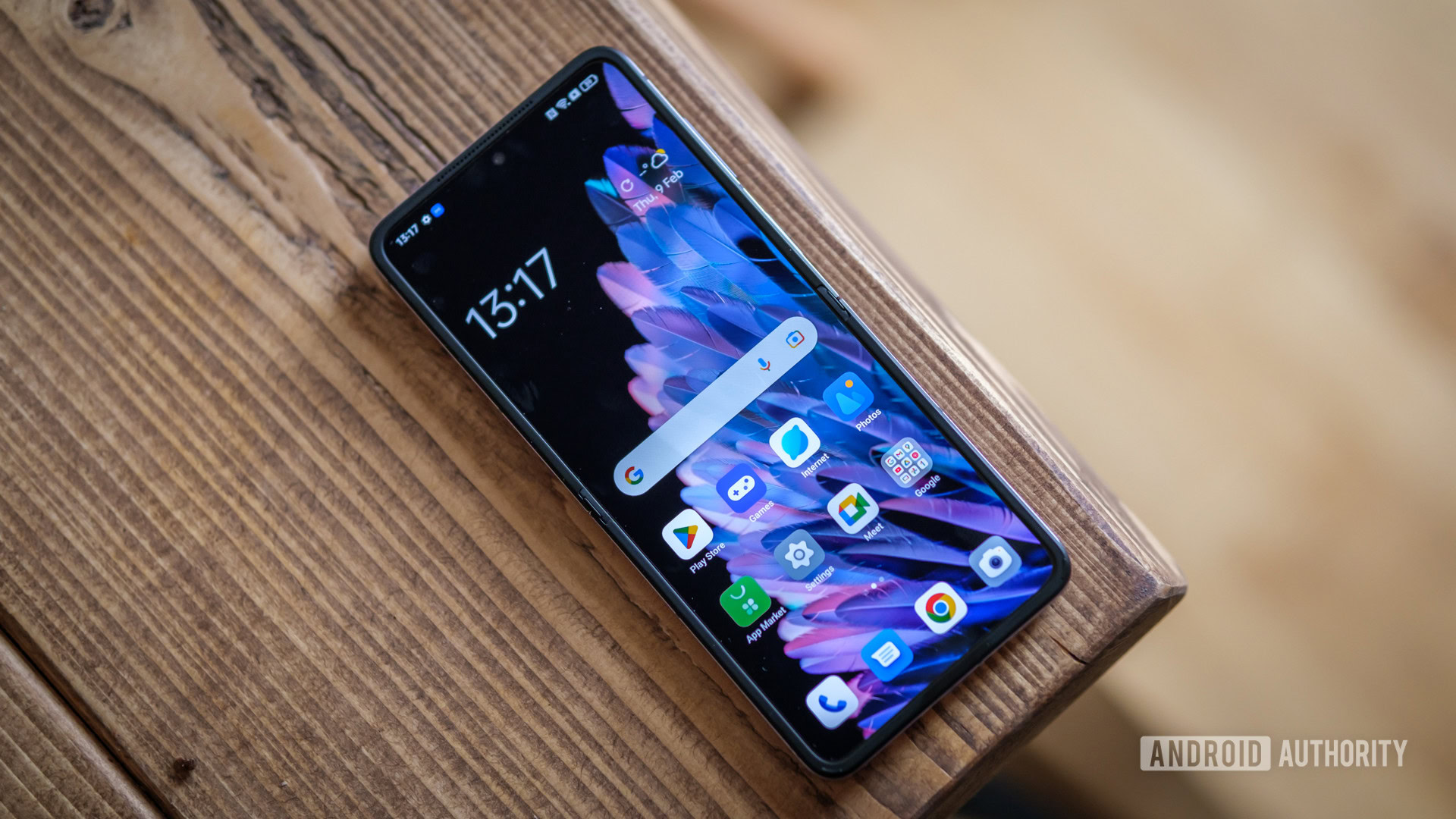
We’re mostly past fretting about early hardware worries with foldable at this point, but OPPO’s first global effort firmly puts any concerns to rest. The OPPO Find N2 Flip is a superbly well-built smartphone, boasting an immaculate display and hinge technology that is every bit as good as the best in the business, if not the best. Paired with robust battery life, solid performance, and large external and internal screens, this is a fashionable compact foldable with a power user’s brawn.
Unfortunately, there are a few blemishes that let the otherwise superb hardware down. A basic IPX4 rating against small splashes, Gorilla Glass 5, finicky charging, a lackluster ultrawide camera, no 4K 60fps video, and a slightly older chipset are perhaps signs that the N2 Flip was in production for a little longer than intended. Those specs don’t stack up quite so nicely against Samsung’s Galaxy Z Flip 4 ($944.45 at Amazon), clearly OPPO’s biggest rival in this space, but it is a more affordable alternative. The camera, while offering great portraits and standard snaps, isn’t enough to make the phone stand out either.
The OPPO Find N2 Flip is a fashionable compact foldable with a power user's brawn.
If neither of those take your fancy, the Motorola Razr 2022 ($830 at Amazon) is available in Europe now too, with a price that nessles between the two. Alternatively, there are plenty of great non-foldable phones at this price. This list includes the Samsung Galaxy S23 ($799 at Amazon) and the more affordable Google Pixel 7 Pro ($589.98 at Amazon) that both offer superb cameras, a full IP68 rating, and wireless charging.
OPPO’s clamshell isn’t the fully polished pearl then, but that doesn’t prevent it from having charm. It’s the best-made compact foldable on the market, with a virtually hidden crease and robust hinge. It’s built to last too, with an update commitment that shares the number one spot in the Android space. While all-day battery life makes this a more dependable workhorse than its rivals. Most of all, it puts the fun back into smartphones, something we can’t say about a lot of new releases.
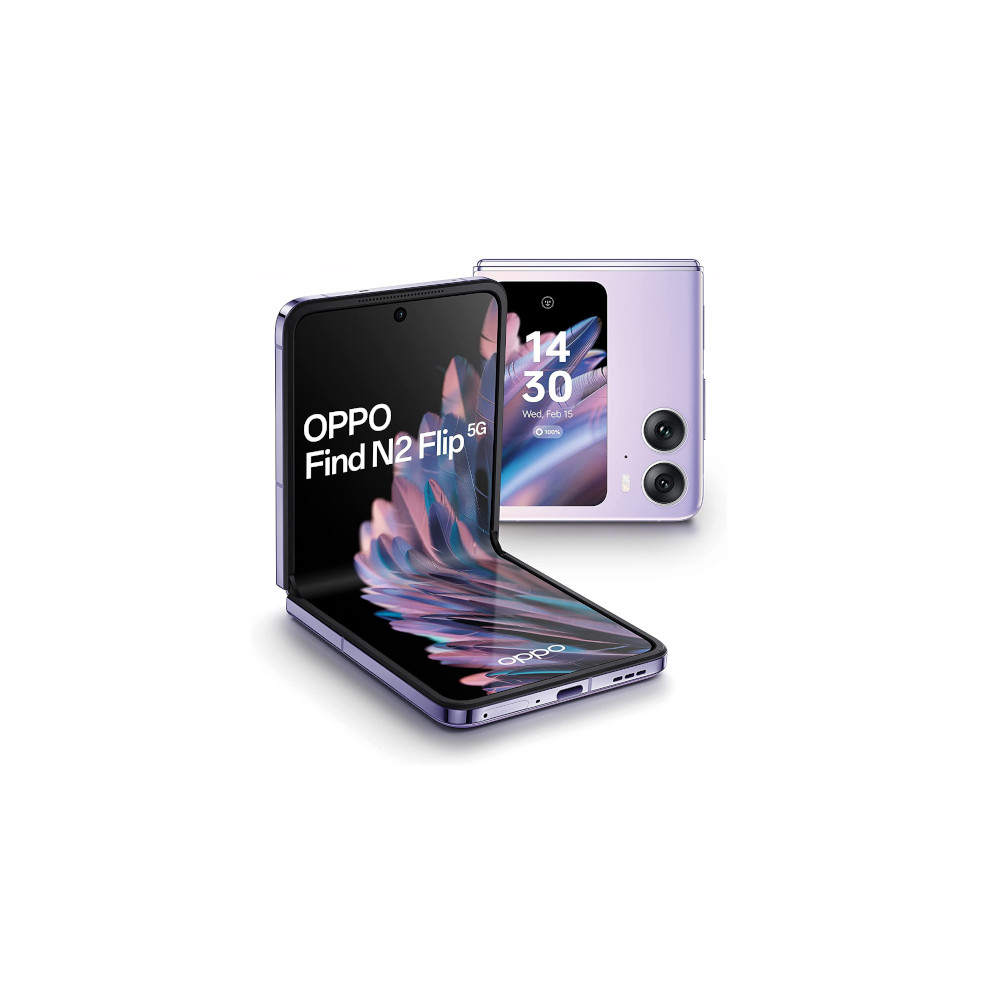

Top OPPO Find N2 Flip questions and answers
Yes. It has an IPX4 rating that protects against splashes but means it should not be submerged.
No. The Find N2 Flip supports 44W wired charging using OPPO’s SuperVOOC technology.
No. OPPO has no presence in the United States, so no OPPO phones are available here. OPPO’s sister brand OnePlus could release a foldable here sometime in 2023, though, so stay tuned for that.
OPPO promises four years of OS and five years of security patches for the Find N2 Flip. That matches Samsung’s best-in-class update pledge.
The OPPO Find N2 Flip is rated for 400,000 fold cycles and the interior screen is protected by Ultra-Thin Glass. The exterior is protected by Corning Gorilla Glass 5 and an aluminum frame, making it reasonably durable but certainly not invincible.
Yes. When you close the Find N2 Flip, the two halves of the internal display are nearly flush.
Yes. The OPPO Find N2 Pro’s internal display is covered with ultra-thin glass (UTG), making it more durable and scratch-resistant when compared to some other foldables that use CPI film.